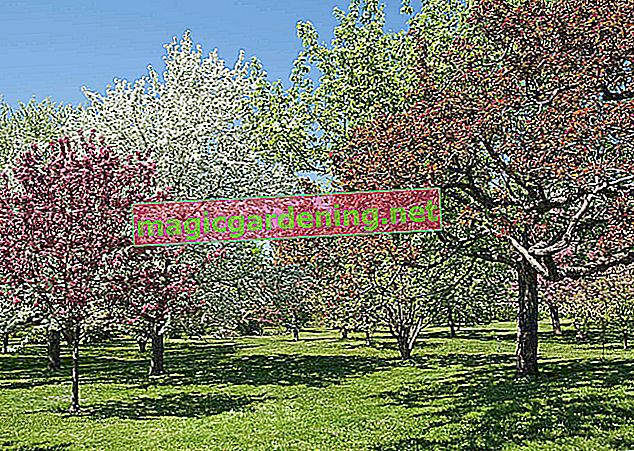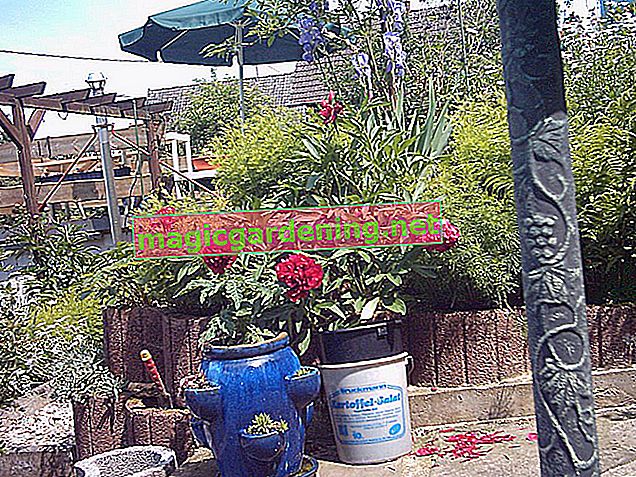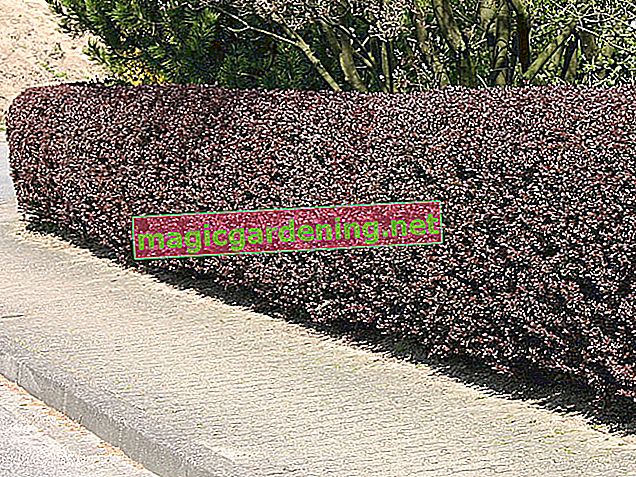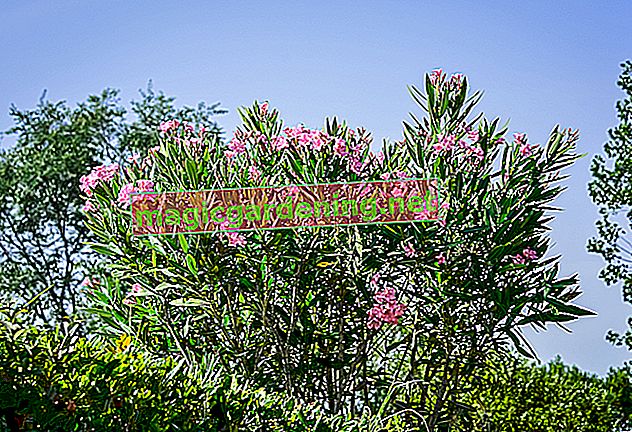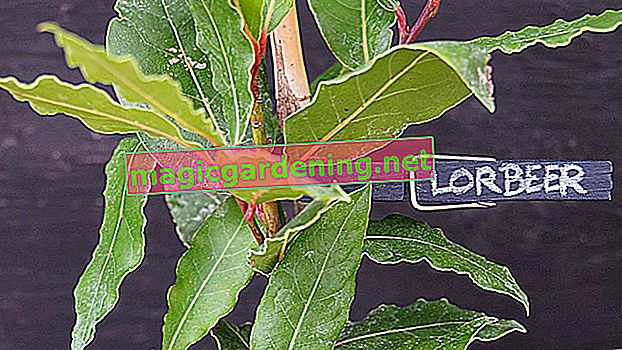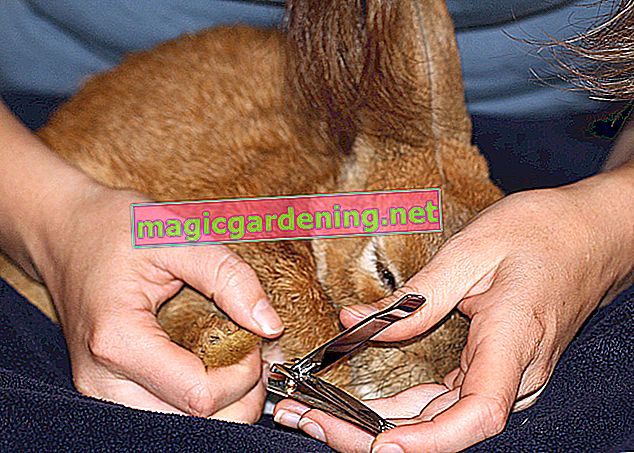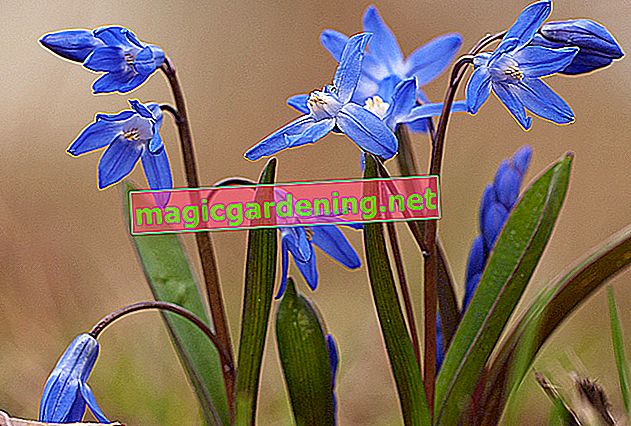
Plant squill correctly
As a typical onion flower, the planting of blue stars - in contrast to classic perennials - follows special guidelines. The autumn planting season has no sensible alternatives, while container plants can be planted almost all year round. The planting technique as such is very easy. How to do it right:
- Dig several holes with a depth of 5-10 cm at a distance of 10 cm
- Place an onion in each with the tip pointing upwards
- Fill in the excavation enriched with compost and horn shavings (€ 6.39 at Amazon *) and press it down
also read
- The squill - not only protected, but also poisonous
- Improve half-knowledge: the bluestar in the profile
- Peruvian squill - 'hardy' a foreign word
If voracious voles frolic in your garden, first put a vole basket in the ground and then plant the bluestars in it.
Care tips
Experience shows that if the flower thrives outdoors, Mother Nature takes over the water supply for Scilla. Only when there is no rain do you water bluestars regularly. The supply of nutrients in the bed is limited to the one-time addition of compost, horn shavings, guano (€ 10.44 at Amazon *) or bark humus. The pruning is also an important criterion for professional care. The first step is to cut off the withered inflorescences. As a result, you give the plant enough time to draw in the remaining nutrients from the foliage. Cut off the yellowed leaves close to the ground. Please consider the slight poisonous content of Szilla during all maintenance work and wear gloves.
Which location is suitable?
It is primarily the two-leaved bluestars that exude their floral charm in early spring. The location conditions suitable for this are broad:
- Sunny, partially shaded location up to light shade under deciduous trees
- Nutrient-rich, humus soil, fresh and moist to moderately dry
- Gladly sandy-loamy, with good drainage
The dwarf flowers are therefore perfect for growing wild in the lawn or as part of a flower meadow. Wherever the soil is not structured in an extremely acidic or exorbitantly alkaline way, Szilla shows what floral power is in them.
When is the flowering time?
The versatile Szilla genus presents us with these heydays:
- Siberian squill (Scilla sibirica): February to March
- Two-leaved blue starlet (Scilla bifolia): March to April
- Bell-blue starlets (Scilla campanulata): April to May
- Hare bells (Scilla non-scripta): May to June
The Peruvian squill (Scilla peruviana), which - depending on location and care - presents its flower clusters between November and February, provides a cheerful splash of color on the wintry windowsill.
Cut the blue star correctly
Regardless of the flowering time, the professional pruning of bluestars follows the same pattern. The withered inflorescences are promptly cut off to just above the leaves. On the one hand, this measure prevents undesired self-sowing. On the other hand, in this way the flower does not invest unnecessary energy in the growth of the capsule fruits. The green leaves linger on the plant until they are completely yellowed. During this time, the onion stores all remaining nutrients in order to create a depot for the next flowering period.
Water the squill
A two-part water balance must be taken into account at Szilla. During the flowering period, water the flower moderately so that it does not come under drought stress. When the flowering is coming to an end, gradually reduce the amount of water you give with the aim of a dry winter or oversummer.
Fertilize the bluestar properly
In the bed, Scilla gladly accept compost fertilization in connection with planting in autumn. Hardy bluestars are also given a layer of compost as nutritious winter protection. A scilla in the pot is repotted after its individual growth rest, so that the flower receives sufficient nutrients with the fresh substrate. If you cultivate bluestars in the balcony box, we recommend a liquid fertilizer every 14 days until the end of the flowering period.
Overwinter
Most of the bluestars are completely hardy. Freshly planted in autumn, we still recommend protective cover with leaves or compost in the first winter. The protective layer is removed by the beginning of February at the latest in order not to hinder the budding. The onion plant could freeze through in the pot and balcony box. If there is frost, wrap jute ribbons or bubble wrap around the container and place it on wood in front of the south wall of the house. The few non-frost-resistant Scilla species, such as the Peruvian squill, overwinter at 10-20 degrees Celsius on the partially shaded windowsill.
Propagate squill
The flower provides the suitable plant material for the offspring of further scilla by producing bulbs. If you dig up the bulb of a well-established plant, you will see the small daughter bulbs at the base. Cut these off with a sharp, disinfected knife and plant them a maximum of 8-10 cm deep in the new location or in the flower box (€ 13.18 at Amazon *).
Is squill poisonous?
Regardless of their different flowering times and growth characteristics, all species and varieties of Szilla should be treated as poisonous plants. Responsible for this are the saponins contained, which can cause inflammation on contact with the skin. If the onions are eaten intentionally or unintentionally, unpleasant symptoms of poisoning are the result, such as nausea, vomiting and cardiac arrhythmias.
Continue reading
How to care for a Peruvian squill?
Since a Peruvian squill lacks any winter hardiness, we recommend cultivation in pots as a winter-flowering house plant. Use cactus soil as substrate or potting soil emaciated with sand, which is poured in over a drainage made of potsherds. Water regularly during the flowering period without causing waterlogging. Do not cut off the subsequently drawn-in sheets until they have completely yellowed. This Scilla wants to rest throughout the summer and is watered a little every 3-4 weeks until September. If the plant sprouts again in autumn, repot in fresh substrate. In this case there is no need to add fertilizer.From October to February place the scilla peruviana on the partially shaded windowsill at 12 to 20 degrees Celsius and enjoy the colorful flowers during the dark season.
Nice varieties
- Rosea: Historical squill with delicate pink flowers and robust winter hardiness; Thrives in sunny to shady locations
- Alba: Siberian scilla with pure white bell flowers in March and April, which harmonize wonderfully with snowdrops
- Peruvian squill: Mediterranean scilla with blue flowers from May to June and a height of 30-40 cm; not hardy
- Spring Beauty: Gentian blue Scilla sibirica, which stretches up to 15 cm towards the sky in April; robust and hardy plant
- Atrocoerulia: Rarity among the Szilla varieties with black-blue flowers from March to April on stems up to 20 cm high

